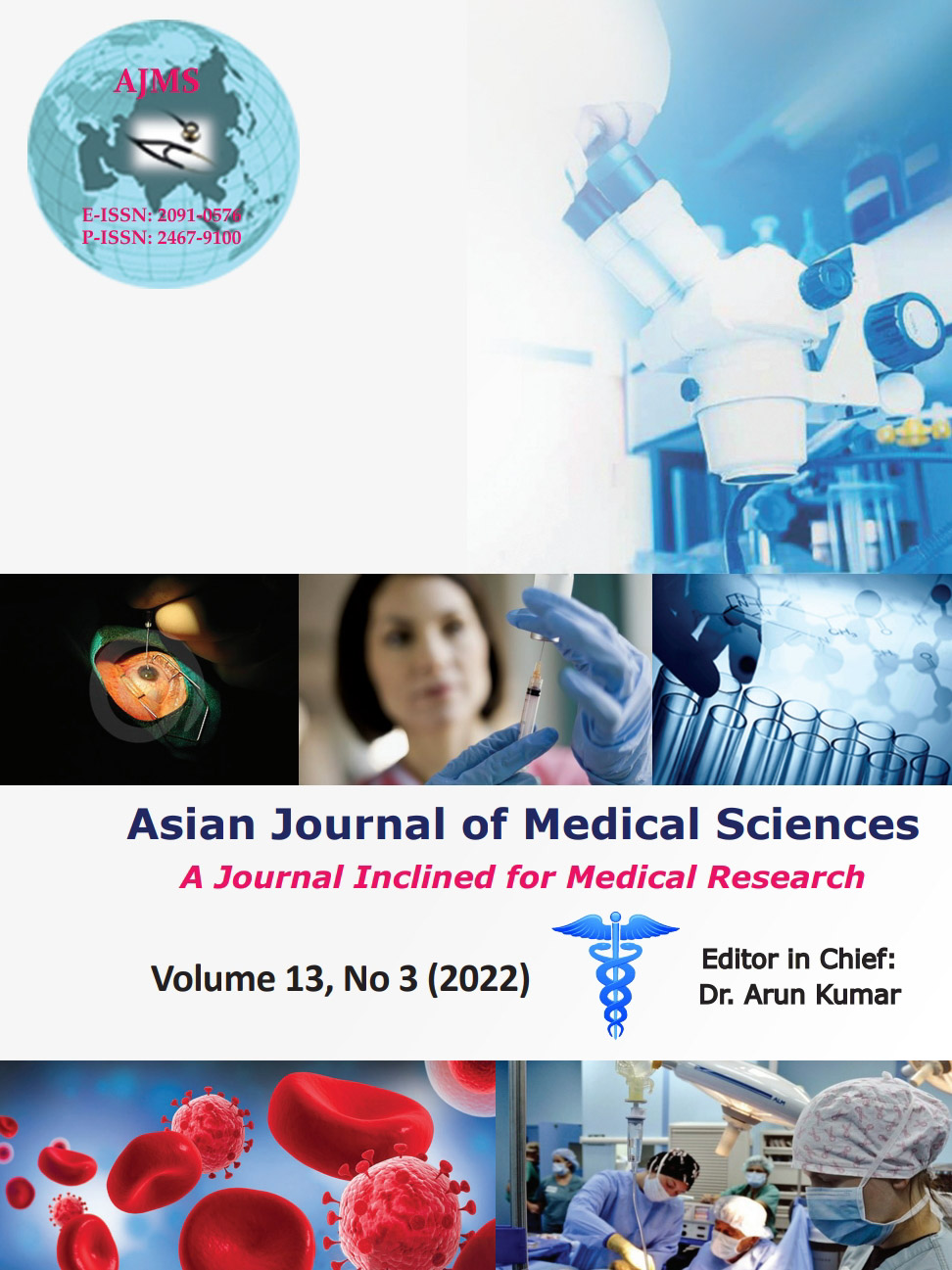Seroprevalence of anti-streptolysin O antibodies and its clinical correlates in patients presenting at a tertiary care hospital of southern Haryana: A five year retrospective study
Keywords:
Arthralgia, Fever, Pharyngitis, Serology, Streptococcus pyogenes, Streptolysin OAbstract
Background: Streptococcus pyogenes, or group A Streptococcus, in addition to sore throat is responsible for certain non-suppurative diseases, such as acute rheumatic fever and post-streptococcal glomerulonephritis, which occur weeks after the acute infectious process. Anti-streptolysin-O (ASO) titer determination is one of important test sought by clinician. ASO has been shown to vary with age, geographical location, season, and site of infection.
Aims and Objectives: To determine the seroprevalence of ASO antibodies and its clinical correlates in a tertiary healthcare facility of Southern Haryana.
Materials and Methods: A retrospective cross-sectional study was done on 453 samples received in the Department of Microbiology, Shaheed Hassan Khan Mewati Government Medical College, Nuh, Haryana, on the blood samples received for the detection of ASO, over a period of 5 years (November 2015–October 2020). The data was analyzed for seroprevalence pattern of ASO and association of the same with clinical symptoms.
Results: The seroprevalence of ASO antibodies in the present study was found to be 11.3%. Females were more positive than males being 60.8% and 39.2%, respectively. The most common age group involved was 11–20 years.
Conclusion: The seroprevalence of ASO antibodies in the present study was found to be 11.3%. Females showed more positivity compared to males. ASO positivity was seen more in the 11–20 years of the age group which could be due to the development of more competent immune system by this age. Arthralgia, fever, carditis, and sore throat were the common clinical presentations. The ASO test is an important investigation being easy to perform even in rural settings providing crucial clue for the diagnosis of post-streptococcal sequelae.
Downloads
Downloads
Published
How to Cite
Issue
Section
License
Copyright (c) 2022 Asian Journal of Medical Sciences

This work is licensed under a Creative Commons Attribution-NonCommercial 4.0 International License.
Authors who publish with this journal agree to the following terms:
- The journal holds copyright and publishes the work under a Creative Commons CC-BY-NC license that permits use, distribution and reprduction in any medium, provided the original work is properly cited and is not used for commercial purposes. The journal should be recognised as the original publisher of this work.
- Authors are able to enter into separate, additional contractual arrangements for the non-exclusive distribution of the journal's published version of the work (e.g., post it to an institutional repository or publish it in a book), with an acknowledgement of its initial publication in this journal.
- Authors are permitted and encouraged to post their work online (e.g., in institutional repositories or on their website) prior to and during the submission process, as it can lead to productive exchanges, as well as earlier and greater citation of published work (See The Effect of Open Access).




